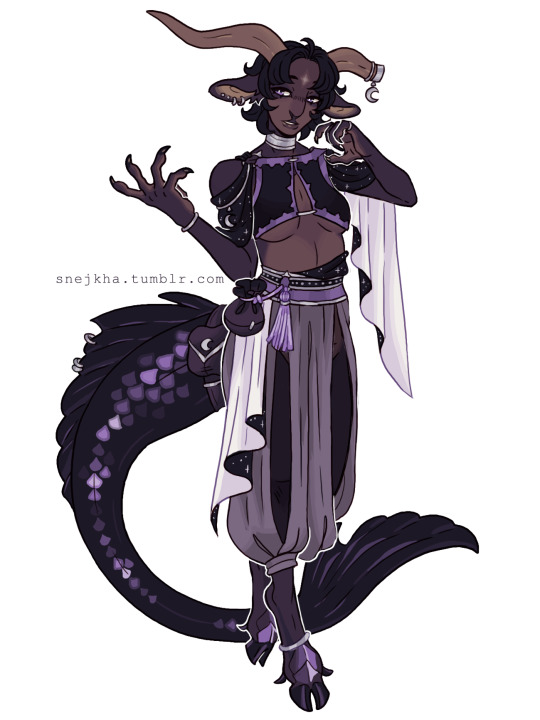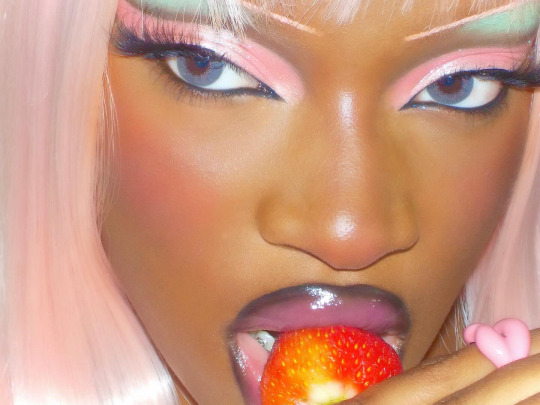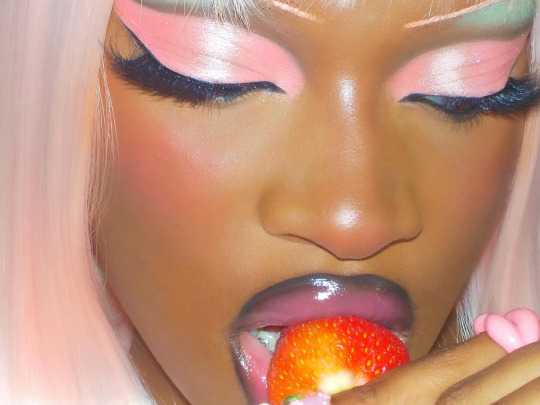Don't wanna be here? Send us removal request.
Text

Yoshitaka Amano, 'Swan Maidens', ''Fairies'', 2006
401 notes
·
View notes
Text

Yuko Shimizu, 'SVA Subway Poster 2', ''Spectrum'', Vol. 24, 2017
524 notes
·
View notes
Photo

Woman adorned like a Chinese goddess poses in a garden in California, 1915. Photograph by Franklin Price Knott, National Geographic Creative
7K notes
·
View notes
Photo

Darrel Rhea, “Flowers & Mermaids” Art Serie. Seattle, Washington.
Contemplation
2K notes
·
View notes
Text
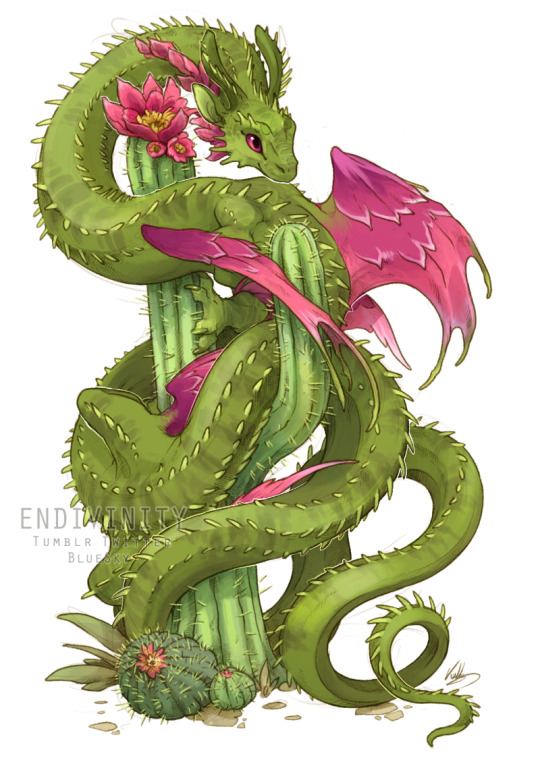
Saguaro redraw from some years back! good ol long cactus
17K notes
·
View notes
Text

"Portrait of Lidia Starytska on a golden background" (1914) by Fedir Krychevskyi (1879–1947)
55 notes
·
View notes
Text

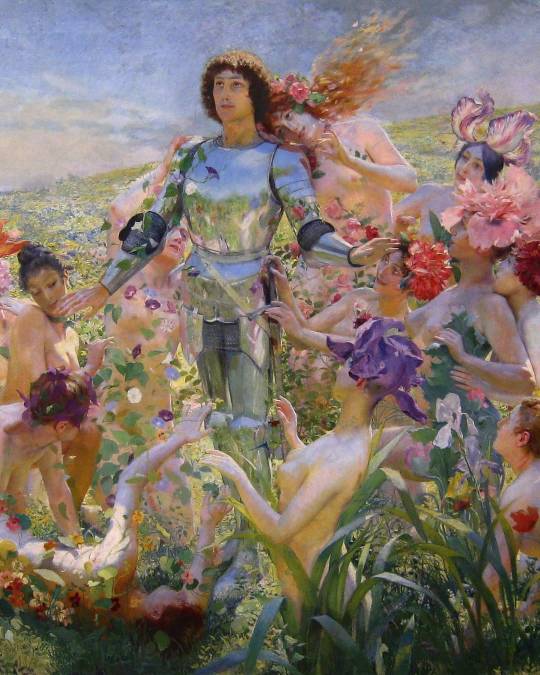

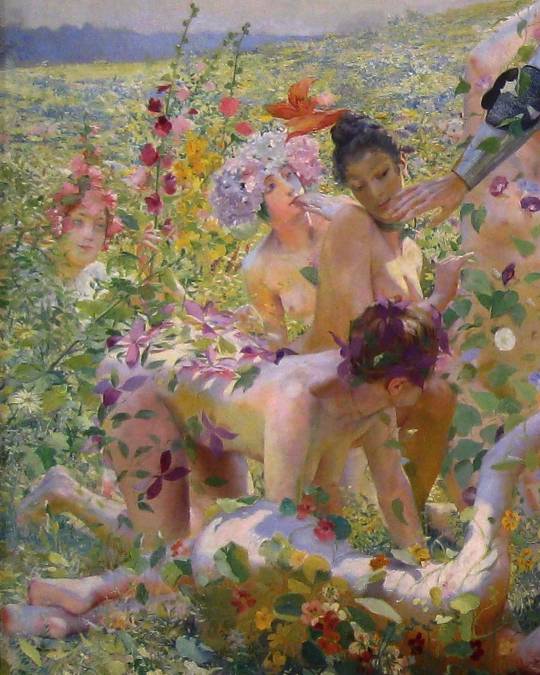

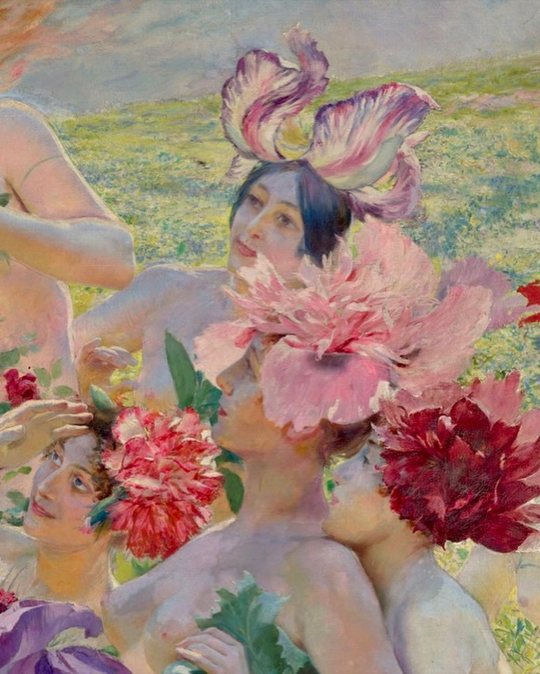
GEORGES ROCHEGROSSE - THE KNIGHT OF THE FLOWERS, 1894
The painting depicts a scene inspired by Richard Wagner's opera "Parsifal." The central figure is Parsifal, an Arthurian knight, who is shown entering the enchanted garden of Klingsor's castle. He is portrayed in full armor, symbolizing his purity and dedication to his quest for the Holy Grail. He stands resolute and unmoved by external distractions, demonstrating his resistance to temptation.
Surrounding Parsifal are the Flower Maidens, or flower nymphs, who are trying to seduce him. These figures are adorned with various flowers like narcissi, peonies, roses, irises, tulips, violets, and hydrangeas. They represent temptation and the worldly pleasures that Parsifal must resist to stay true to his spiritual journey. However, Parsifal remains focused, ignoring the calls and gestures of the maidens.
Rochegrosse introduces several distinctive elements when compared to other interpretations of the character from different artists who might choose to depict Parsifal in scenes of his quest for the Holy Grail, his healing of Amfortas, or his anointment as Grail King. For instance, Franz Stassen's illustrations for Wagner's "Parsifal" often show Parsifal in more spiritual or heroic contexts, like the Grail ceremony or his final act of healing.
Beyond critical reviews, "The Knight of the Flowers" was significant enough to be acquired by the French state for the Musée du Luxembourg, indicating not just official recognition but also a broader public appreciation. This acquisition suggests that the painting resonated with the cultural and artistic tastes of the period, where there was a fascination with decadence, mysticism, and the exploration of human psychology through art.
70 notes
·
View notes
Text

Virginia Woolf, January 25, 1882 – March 28, 1941.
506 notes
·
View notes
Text
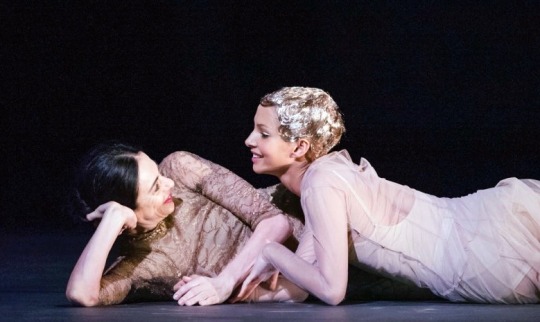

The Royal Ballet’s Woolf Works (2017), ph. Tristram Kenton
4K notes
·
View notes
Text

from a/w 2o23 issue of another magazine, ph. luca khouri | "Coat in shearling by LOEWE. Cropped hooded jacket in sustainable nylon (underneath) by FERRAGAMO. T-shirt in jersey by MIU MIU. And stylist’s own knickers in cotton and tights in nylon"
66 notes
·
View notes
Photo
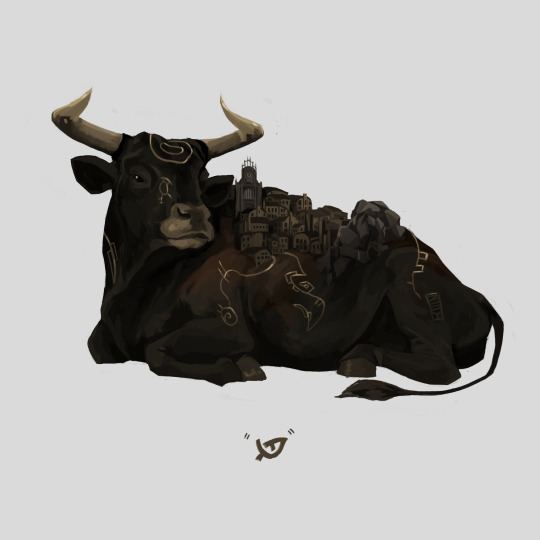
“the udurgh is…”
(originally posted on 11/07/2020)
1K notes
·
View notes

